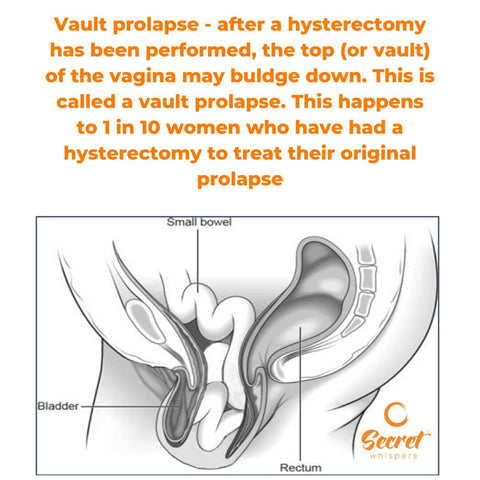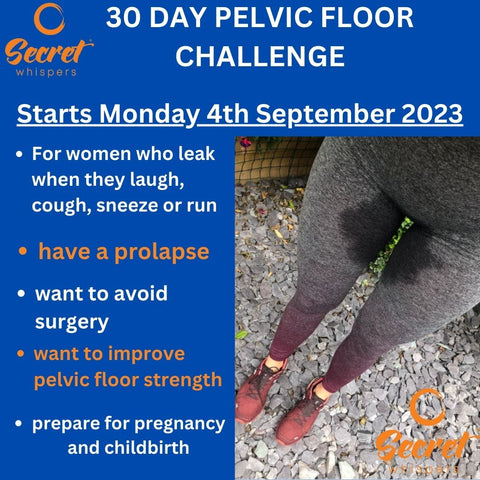Your Pelvic Floor after a Hysterectomy

Welcome to our blog where we will explore the impact of a hysterectomy on your pelvic floor.
A hysterectomy is a common surgical procedure that involves the removal of the uterus. While it can offer relief from various health conditions, it may also affect the strength and function of your pelvic floor muscles.
There are several different types of hysterectomy, which differ based on the extent of the surgery and the organs removed. The three main types of hysterectomy are:
-
Total Hysterectomy: In a total hysterectomy, the entire uterus, including the cervix, is removed. This is the most common type of hysterectomy.
-
Partial Hysterectomy (Supracervical Hysterectomy): In a partial hysterectomy, also known as a supracervical hysterectomy, only the upper part of the uterus is removed. The cervix is left intact.
-
Radical Hysterectomy: A radical hysterectomy is a more extensive surgery typically performed for gynecologic cancers, such as cervical or uterine cancer. It involves the removal of the uterus, cervix, upper part of the vagina, and nearby tissues, such as lymph nodes.
In this article, we will discuss how a hysterectomy can influence your pelvic floor and provide tips on maintaining its health.
How a Hysterectomy Affects the Pelvic Floor
A hysterectomy can have an impact on your pelvic floor muscles, which support the bladder, uterus, and rectum. The removal of the uterus during a hysterectomy may weaken the pelvic floor by altering the normal anatomical structure.
This can lead to an increased risk of prolapse (ranges up to 43%), which occurs when the pelvic organs descend into the vaginal canal.
However, the extent of pelvic floor weakness can vary from person to person depending on factors such as surgical technique, pre-existing pelvic floor conditions, and individual healing abilities.
What Are the Symptoms of a Prolapse After Hysterectomy
After a hysterectomy, it's important to be aware of the symptoms of pelvic organ prolapse. These symptoms may include:
- A sensation of heaviness or pressure in the pelvic area
- A bulge or protrusion in the vaginal canal or near the vaginal opening
- Discomfort or pain during intercourse
- Urinary incontinence or difficulty emptying the bladder completely
- Bowel movement difficulties or a feeling of incomplete bowel emptying
If you experience any of these symptoms, it's essential to consult with your healthcare provider for an accurate diagnosis and appropriate treatment.
How Soon After Hysterectomy Can Prolapse Occur?
While a prolapse can occur in the early years following a hysterectomy, it's important to note that the risk of prolapse increases over time. As the pelvic floor muscles gradually weaken due to the absence of the uterus, the likelihood of experiencing a prolapse may also rise. However, it's crucial to remember that each person's experience is unique, and the timeframe for prolapse can vary.
What Is A Vault Prolapse?
The top of the vagina (vault) sagging down (vault prolapse) – this happens to some women after they have had surgery to remove their womb.

How to Prevent Prolapse After Hysterectomy
Fortunately, there are steps you can take to reduce the risk of prolapse after a hysterectomy. Consider implementing the following tips into your routine:
-
Maintain a healthy weight: Excess weight can strain your pelvic floor muscles. Focus on maintaining a healthy weight through regular exercise and a balanced diet.
-
Practice good posture: Proper posture helps to distribute pressure evenly on your pelvic floor. Sit and stand tall, aligning your spine and pelvis.
-
Avoid heavy lifting: Lifting heavy objects can strain your pelvic floor. When lifting, remember to engage your core muscles and use proper lifting techniques. Remember The Knack Technique here.
-
Stay hydrated and maintain regular bowel movements: Adequate hydration and a diet high in fiber can help prevent constipation, which can strain the pelvic floor. Don't forget to use a footstool when doing a poo.
-
Pelvic floor exercises: Strengthening your pelvic floor muscles is vital after a hysterectomy. Pelvic floor exercises, such as Kegels, can help improve muscle tone and support. (Refer to the "Post-Hysterectomy Pelvic Floor Exercises" section below for more details.)
By incorporating these preventive measures into your daily routine, you can enhance the overall health and strength of your pelvic floor.
Post-Hysterectomy Pelvic Floor Exercises
After a hysterectomy, it's essential to engage in targeted exercises to promote pelvic floor strength and recovery. Here are three exercises that can help strengthen your pelvic floor muscles:
Exercise #1- Kegels:
Kegel exercises target the pelvic floor muscles and can be done discreetly anytime, anywhere. Here's how to perform Kegels:
- Sit, stand, or lie down comfortably.
- Identify the muscles you use to stop the flow of urine or prevent passing gas. These are your pelvic floor muscles.
- Contract these muscles by squeezing and lifting them upward. Imagine pulling them in and upward towards your belly button.
- Hold the contraction for a few seconds, then release and relax the muscles.
- Repeat this cycle of contracting and relaxing for about 10-15 times per session.
- Aim to do three sets of Kegels throughout the day, gradually increasing the duration of the holds to 10 seconds with a 5 second rest between each as your muscles get stronger.
- The goal is to be able to eventually do 10 X Slow Kegels, followed by 10 X Fast Kegels two to 3 times a day.


Exercise #2 - Bridge Pose:
The bridge pose targets the glutes, hamstrings, and pelvic floor muscles. Follow these steps to perform the bridge pose:
- Lie on your back with your knees bent and feet flat on the floor, hip-width apart.
- Place your arms alongside your body, palms facing down.
- Inhale deeply, and as you exhale, engage your pelvic floor muscles.
- Press your feet into the floor and lift your hips off the ground, creating a straight line from your knees to your shoulders.
- Hold the position for a few seconds, focusing on activating your pelvic floor muscles.
- Slowly lower your hips back down to the starting position.
- Repeat the bridge pose for 10-15 repetitions, gradually increasing as you gain strength.
Exercise #3 - Squats:
Squats are a compound exercise that engages various muscle groups, including the pelvic floor. Here's how to perform squats:
- Stand with your feet shoulder-width apart, toes slightly turned out.
- Engage your core muscles and keep your back straight.
- Slowly lower your body as if you are sitting back into an imaginary chair, keeping your knees in line with your toes.
- Go as low as you comfortably can, ensuring your knees don't extend past your toes.
- Press through your heels and engage your glutes and pelvic floor muscles as you stand back up to the starting position.
- Repeat the squats for 10-15 repetitions, gradually increasing as you build strength.
It's important to note that the risk of prolapse generally increases with time after the hysterectomy, especially in the years following the surgery. Factors such as aging, hormonal changes, and the natural weakening of pelvic floor muscles over time can contribute to this increased risk.
It's crucial for women who have undergone a hysterectomy to be aware of the symptoms of prolapse and to communicate any concerns or changes they experience with their healthcare provider.
Regular pelvic floor exercises, maintaining a healthy lifestyle, and following post-operative care guidelines can help reduce the risk of prolapse and support pelvic floor health.
Remember to listen to your body and stop any exercise that causes pain or discomfort. It's always a good idea to consult with a healthcare professional or pelvic floor physiotherapist before starting a new exercise routine after a hysterectomy.
Additionally, you can find more information on the purpose of the pelvic floor, how to identify weak pelvic floor muscles, whether it's ever too late to start pelvic floor exercises, and how long it takes to tighten pelvic floor muscles by visiting the following blog posts:
- What Is the Purpose of the Pelvic Floor?
- How to Know If Your Pelvic Floor Is Weak
- Is It Too Late to Start Pelvic Floor Exercises?
- How Long Does It Take to Tighten Pelvic Floor Muscles?
To learn more about pelvic floor health, we recommend checking out the following resources:
Secret Whispers Pelvic Floor Toner for Women
Secret Whispers 4-Week Pelvic Floor Workout Programme

Secret Whispers 30-Day Pelvic Floor Challenge
In this challenge you will learn how to do your Kegel exercises correctly and incorporate them into every day daily activities. Check out all of the reviews
For any questions or further assistance, feel free to reach out to us. Your pelvic floor health matters, and we're here to support you on your journey to well-being.
Never miss another blog again. Sign up now to our weekly Newsletter. You will get a 10% discount code to use too. Just click below ⬇️⬇️⬇️












